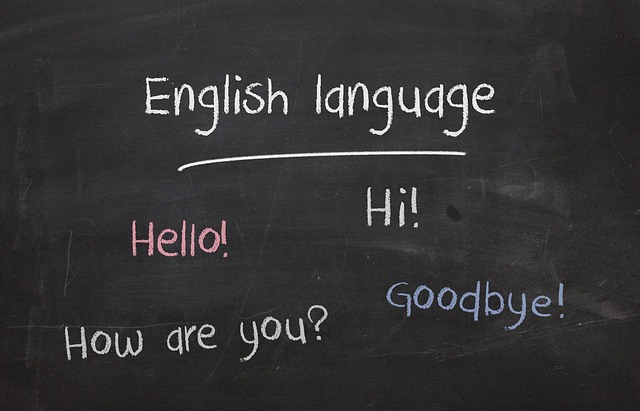Rapid Translate Team
The language gap between Arabic and English has many differences. These include the writing style, sounds, letters, calligraphy, and cultural nuances. Therefore, the Arabic-English language combination is a formidable pair to handle. Hence, only a professional Arabic Translator can handle official translations involving Arabic.
However, the decision to use only professional translators depends on the complexity of your translation. Hence, you can use an automation-powered translation tool to convert casual conversations. But before deciding, you should understand the translation process.
So, here’s a comprehensive guide to help you. Read on to learn everything you need to know!

Table of Contents
The Importance of Arabic Translation
Arabic translation works both ways. One can translate Arabic into English or the opposite, which is translating English into Arabic. Either way, both forms of Arabic translation are essential in human interaction as they bridge a gap in written communication.
Unlike other languages, the English and Arabic alphabet and sounds aren’t similar. Therefore, guessing the meaning of words is almost impossible. Diverse, vague differences in the structure of Arabic and English impede understanding between peoples of either origin.
For example, English is a Western language that is spoken widely, written, and read from left to right. Arabic, a Semitic language spoken mainly in the Middle East, is quite different, written from right to left.
While the English language has 26 letters consisting of vowels and consonants, Arabic letters are consonants and 28 in number. To indicate vowel sounds, Arabians use diacritical symbols.
Additionally, there are differences even in writing, as English follows the print script while the Arabian script is cursive. Also, some words in the English language do not exist in Arabic. Therefore, a literal word-for-word translation is difficult to perform.
So, rather than focusing on the words that make up sentences, translators focus on the meaning of the entire sentence. Moreover, certain letters of the Arabic alphabet have different forms, and their positioning in a sentence influences their appearance.
Because of these vast differences, it’s difficult for an English speaker to understand Arabic and vice versa.
However, it’s not impossible if they devote time to learning. But this isn’t necessary for a brief visit or application procedures. Hence, Arabic translations from and into English are vital to foreigners.

When To Translate English to Arabic
Anyone can be a client requiring English to Arabic translation. Various circumstances can lead to the need to translate English to Arabic, but some instances are more common than others.
For example, English-speaking travelers visiting Saudi Arabia or other Arabic-speaking countries must translate their documents. This category of rendition is the immigration translation. Its purpose is to enable the host nation’s immigration officers to analyze the visitor’s background with proof of origin.
However, a specialized translation like this requires more than a professional translator. The appropriate personnel to handle this is an expert in the immigration translation industry who understands the niche’s complex technicalities.
Getting an expert for your document type is essential for correctness, accuracy, and precision. Aside from fundamental differences between Arabic and English, each field has unique terminologies that must maintain their meaning in translation.
Any slight mistake can alter your document’s meaning and lead to grave consequences. In addition to foreign travel, academic or job applications may require people to translate English to Arabic paperwork.
Such paperwork includes academic diplomas, birth certificates, and financial statements. Business deals, contracts, and proposals can also require corporate translations. So whenever the need arises, don’t hesitate to find an appropriate translation channel to help you.

How To Translate Arabic Into English
As mentioned earlier, translation works in two ways. And in both forms, the same rules are applicable. Any Arabian heading to an English terrain will require a translation.
You must note that self-translation is inappropriate for formal use, so you must hire a translation provider. However, you mustn’t search for a translation service in ignorance. Understanding the procedure beforehand can help you set realistic expectations.
That said, the first step in learning how to translate Arabic into English is to prepare your documents. You must get the original Arabic documents or clear photocopies. This step ensures the Arabic language translator can read and understand the document’s content.
After arranging your documents, you must identify its niche. Doing this will let you know the niche in which you need a translator. As you know, specialized niches need subject matter experts.
After identifying the kind of Arabic translator you need, browse different platforms to find one. You can locate translators nearby by searching Google for “Translators in my vicinity.” Please review your options by checking their qualification, years of experience, and ratings.
Analyzing reviews will enable you to select the best translator. After selecting, contact your choice translator and ask for a quote to know the payment rate. If you find it suitable, lay out your requirements. You can discuss deadlines and finalize the deal upon agreeing with the Arabic language translator.
Translation typically takes a day or a few days, depending on the volume of work. You can receive a physical copy via mail or a digital one via email. After receiving your document, you can pay and finalize the deal.

Four Sources of English to Arabic Translation and Vice Versa
You should research the types of translation services that offer English-to-Arabic translation and vice versa. Understanding your options can streamline your search and influence your decision. So, below are four translation options you can explore.
1. Translation Websites
Translation websites are becoming more rampant in this digital age. Programmers create sites powered by artificial intelligence (AI) technology to render text into different languages.
Some tools also use Google Translate or Microsoft’s Application Programming Interface to translate text. While translation websites are helpful, it’s best to use them for basic renditions alone. These tools are prone to inaccuracies because they can’t understand language complexities and idiomatic expressions.
2. Freelance Arabic Translator
Freelancers are independent translators who offer their services through online job search platforms. Usually, freelancers charge per hour, which is more expensive than the per-page basis. You can find cheap freelancers, but you should be wary of these as sometimes lesser fees mean lesser value.
Before hiring any freelancer, review their profile, check for the number of jobs they’ve completed, and read reviews. You can also request proof of experience, such as qualifications and job samples. Doing this will help you assess an individual’s translation ability before hiring them.
3. Physical Translation Companies
Translation companies work with translators from all niches. By patronizing physical companies, you can have face-to-face conversations with prospective translators and assess them thoroughly.
You also get to build a personal relationship with your translator, which can lead to long-term collaboration. Furthermore, physical communication fosters a greater chance of confidentiality, eliminating the need to send information across servers.
4. Online Translation Agencies
Anyone who patronizes a reliable online translation agency will have no regrets. They combine the features of physical companies and websites, so they’re like the best of both worlds.
But note that the keyword is reliability. Numerous online agencies exist, but not all are credible. Trustworthy agencies usually belong to professional translation associations. So you can check their membership status across several directories to confirm their reliability.
Analyzing their website will also provide insight into their standards, procedures, and operational information. The website also contains their pricing guide and a vivid explanation of their mode of operation.
Exceptional agencies have editors who vet translations to ensure precision and accurate maintenance of concepts and context. Rapid Translate is one such translation agency that bridges communication gaps between Arabic, English, and other languages.
Rapid Translate has several positive reviews that attest to its legitimacy and credibility. This agency belongs to the American Translators Association (ATA) and has an operational license from the International Organization for Standardization (ISO).
So, we are the best service to procure your Arabic translator from. Our translators navigate the differences between English and Arabic with skill and proficiency.
By doing so, we create resonating translations that replicate information with clarity. So, place an order for your Arabic translation today!





